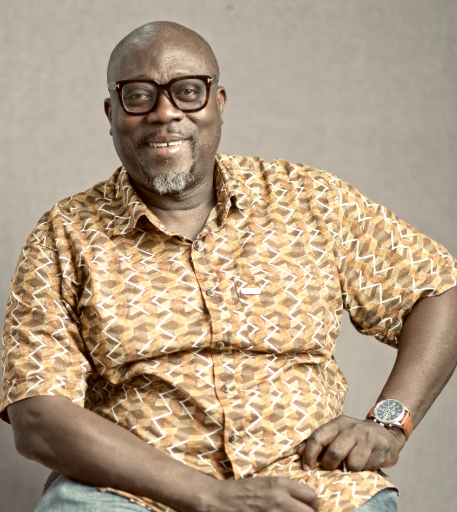About Us
 The Department of Painting and Sculpture has the oldest history in the Kwame Nkrumah University of Science and Technology (KNUST) and among the pioneering art departments in Africa. It was founded in 1927 as part of the Prince of Wales (Achimota) College. G. A. Stevens, a student of Henry Tonks at the Slade was the first art teacher. He mentored the early colonial teachers of British Africa. Among them were Margaret Trowell, the founder of the Makerere Art Department in Uganda and Kenneth Murray of Nigeria. The Department developed into the School of Arts and Crafts in 1937 under the supervision of the sculptor H. V. Meyerowitz, a mentor of the sculptor Lippy Lipshitz at Michaelis and the carver of the Lieberman Doors in Cape Town. In 1952, under the supervision of the Scottish painter J. M. Mackendrick, an alumnus of the Glasgow School of Art, the School was transferred to Kumasi to become the nucleus of Kumasi College of Technology, the colonial ancestor of KNUST.
The Department of Painting and Sculpture has the oldest history in the Kwame Nkrumah University of Science and Technology (KNUST) and among the pioneering art departments in Africa. It was founded in 1927 as part of the Prince of Wales (Achimota) College. G. A. Stevens, a student of Henry Tonks at the Slade was the first art teacher. He mentored the early colonial teachers of British Africa. Among them were Margaret Trowell, the founder of the Makerere Art Department in Uganda and Kenneth Murray of Nigeria. The Department developed into the School of Arts and Crafts in 1937 under the supervision of the sculptor H. V. Meyerowitz, a mentor of the sculptor Lippy Lipshitz at Michaelis and the carver of the Lieberman Doors in Cape Town. In 1952, under the supervision of the Scottish painter J. M. Mackendrick, an alumnus of the Glasgow School of Art, the School was transferred to Kumasi to become the nucleus of Kumasi College of Technology, the colonial ancestor of KNUST.
In the Nkrumah Republican period (1960-1966), the School became an autonomous College of Art headed by the painter E. V. Asihene, an Achimota and Goldsmiths alumnus. In the new College, the Department’s curriculum was based on the recommendations of the First Coldstream Report (1960) which had kick-started the upgrade of art schools in the UK to degree status. Principally, external moderators of the new KNUST programme were either social realist artists or affiliates of the British avant-garde teaching at Goldsmiths, the Slade and the Royal College of Art. The succeeding curriculum of the mid 1970s, through the 1980s, had a group of African Modernists from Nigeria as external assessors and moderators. Among them were the eminent artists Ben Enwonwu, Uche Okeke, Solomon Irein Wangboje, and Demas Nwokwo. With an increasing focus on Africanist narrative realism in painting and official statuary in sculpture, the authority of European traditional and early Modernist media, genres and formats remained unchallenged. The curriculum’s range of painting genres still remained within the bounds of still life, landscape and pictorial composition with the stylistic dominance of geodesic (freshman) cubism, the so-called Tek Style which undergirds most murals on campus.
At the turn of the century, the Coldstream-inspired curriculum gave way to a more inclusive and exhibition-focused one. Under the stewardship of the younger Ghanaian faculty of principally Generation X kinship, painting and sculpture options and their humanist framework have expanded to include, among others, photography, time-based media, local artisanship, new materiality, curating, text, performance, post-humanst media, robotics, video gaming, site specific and community practice. In this expanding field of art practice, the concept of studio also expands to include artisanal, high-tech and social interventionist workspaces in the outlying city and beyond. Above all, students at all levels (BFA, MFA and PhD) are encouraged to cultivate political sensitivity to materials, technologies and sites of their practice. After a little more than a decade of running the new curriculum, the Department is now an important hub of emergent Contemporary Art in West Africa with an expanding list of significant artists of the post-internet generation. The programme’s significance was further boosted when its 1969 alumnus El Anatsui, earned the Golden Lion Lifetime Award at the 2015 Venice Biennale. Since the founding of the blaxTARLINES Project Space in 2014, the Department has organised and curated critically-acclaimed exhibitions in Kumasi and Accra. blaxTARLINES also maintains external exchange links with a growing list of art institutions and project spaces such as the Städelschule Frankfurt, CCA Lagos, University of Florida’s Harn Museum of Art, , Ahmadu Bello University, Zaria and University of Nigeria, Nsukka.